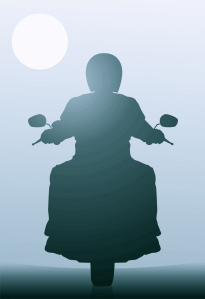 “Don’t ride motorcycles.” That was the advice 72-year-old Sister Dottie gave the women in her Caroline Center anatomy class. She spent 27 years riding motorcycles while working as a missionary and physician’s assistant in the mountains of rural Bolivia. While there, she helped open and run several health clinics. A motorcycle was the only way to get around the narrow, dirt roads of that undeveloped country. As she travelled by bike from one impoverished village to the next, tending to the needs of the sick, Sister Dottie became a human shock absorber. Her knees took the brunt of it and eventually both were replaced by surgery.
“Don’t ride motorcycles.” That was the advice 72-year-old Sister Dottie gave the women in her Caroline Center anatomy class. She spent 27 years riding motorcycles while working as a missionary and physician’s assistant in the mountains of rural Bolivia. While there, she helped open and run several health clinics. A motorcycle was the only way to get around the narrow, dirt roads of that undeveloped country. As she travelled by bike from one impoverished village to the next, tending to the needs of the sick, Sister Dottie became a human shock absorber. Her knees took the brunt of it and eventually both were replaced by surgery.
“So, don’t ride motorcycles,” Sister Dottie repeated with a chuckle. She was teaching a class on the skeletal system 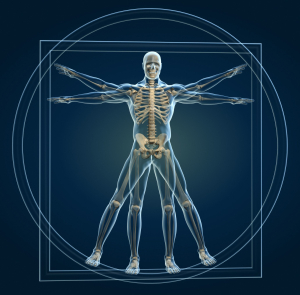 to a group of certified nursing assistant trainees (CNA). It’s the kind of stuff they have to know if they’re going to be able to communicate with the doctors and nurses they’ll work with once they graduate and get jobs. The skeletal system, Sister Dottie explained, is essential to the body for movement, protection, and support. The skeleton itself is made up of 206 interconnected bones and facilitated by joints, ligaments, and cartilage. Like any system, it’s all about connectivity. Sister Dottie taught the class with enthusiasm and peppered her lecture with amusing anecdotes, which the women clearly appreciated. For their part, the women took copious notes and asked really astute questions. I mentioned this to Sister Dottie after class. It caused her to express pride and frustration at the same time.
to a group of certified nursing assistant trainees (CNA). It’s the kind of stuff they have to know if they’re going to be able to communicate with the doctors and nurses they’ll work with once they graduate and get jobs. The skeletal system, Sister Dottie explained, is essential to the body for movement, protection, and support. The skeleton itself is made up of 206 interconnected bones and facilitated by joints, ligaments, and cartilage. Like any system, it’s all about connectivity. Sister Dottie taught the class with enthusiasm and peppered her lecture with amusing anecdotes, which the women clearly appreciated. For their part, the women took copious notes and asked really astute questions. I mentioned this to Sister Dottie after class. It caused her to express pride and frustration at the same time.
“Yes! These women are so smart. They have such innate intelligence. But they have been so cheated! By the circumstances of their backgrounds, by the school system…” 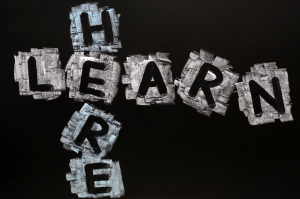 It’s true. In so many ways these women have been let down and left behind. It’s the Caroline Center’s hope to pick them up and push them forward. The women come to the center with great determination but with skill gaps across a spectrum of subjects and in areas that – for many of our readers – are common knowledge. That’s why there is such a strong emphasis on education at Caroline Center. It’s not just about job training – which is key – it’s about educating the whole person so that she can do well in all areas of life. I know of very few other workforce development programs that do this and none that provide this kind of care and education tuition free. Caroline Center trains the women for occupations where there is the possibility of
It’s true. In so many ways these women have been let down and left behind. It’s the Caroline Center’s hope to pick them up and push them forward. The women come to the center with great determination but with skill gaps across a spectrum of subjects and in areas that – for many of our readers – are common knowledge. That’s why there is such a strong emphasis on education at Caroline Center. It’s not just about job training – which is key – it’s about educating the whole person so that she can do well in all areas of life. I know of very few other workforce development programs that do this and none that provide this kind of care and education tuition free. Caroline Center trains the women for occupations where there is the possibility of  advancement: Nursing and Pharmacy Technology. Still, most of them will start out in jobs making $11 an hour. While that is over 50% more than minimum wage, it is nowhere near what a woman needs long-term to support herself. Her children. Her family. So the road ahead of these women is steep and rocky…like the mountain roads of Bolivia that Sister Dottie used to travel. Still, they are determined. And, thanks to Caroline Center, far better equipped for the journey.
advancement: Nursing and Pharmacy Technology. Still, most of them will start out in jobs making $11 an hour. While that is over 50% more than minimum wage, it is nowhere near what a woman needs long-term to support herself. Her children. Her family. So the road ahead of these women is steep and rocky…like the mountain roads of Bolivia that Sister Dottie used to travel. Still, they are determined. And, thanks to Caroline Center, far better equipped for the journey. 
I asked Sister Dottie how the 2 worlds compared: that of Baltimore’s urban poor in the most developed country in the first world and that of Bolivia’s rural poor in one of the most underdeveloped countries in the third world. “The needs of the people in Bolivia are more visible. You can see it in their faces, read it in their eyes. For them, it’s a matter of life and death. For the women of Caroline Center, it’s about a different kind of survival. A survival of the spirit. And a question of self-worth. But the needs – both tangible and intangible – are very real.” Just like the skeletal system, it’s all about connectivity. Sister Dottie connects her experiences in Bolivia to the women in Baltimore. She shares with them stories from her past that will help them in the future. Just like the skeletal system, it’s all about 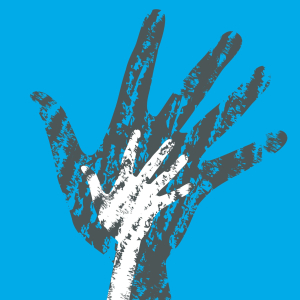 movement. Caroline Center empowers the women to move. Forward. Onward. Upward. Just like the skeletal system, it’s all about support. Caroline Center supports these women in their quest for a better life. Supports them morally, spiritually, educationally, practically. Sister Dottie and the rest of the staff tend to the needs of these women now so that they, in turn, can tend to the needs of others later. Family needs. Patient and client needs. Our needs. These, after all, are the women who will take care of us in the hospital and our parents in the nursing home. These are women we will come to depend on one day. Their needs are our needs. Their human dignity is our human dignity. Their future is our future. Yup. It’s all about connectivity.
movement. Caroline Center empowers the women to move. Forward. Onward. Upward. Just like the skeletal system, it’s all about support. Caroline Center supports these women in their quest for a better life. Supports them morally, spiritually, educationally, practically. Sister Dottie and the rest of the staff tend to the needs of these women now so that they, in turn, can tend to the needs of others later. Family needs. Patient and client needs. Our needs. These, after all, are the women who will take care of us in the hospital and our parents in the nursing home. These are women we will come to depend on one day. Their needs are our needs. Their human dignity is our human dignity. Their future is our future. Yup. It’s all about connectivity.
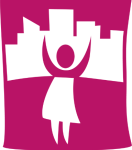

I like the helpful information you provide in your articles. I will bookmark your blog and check again here frequently. I’m quite sure I will learn much right here! Good luck for the next!